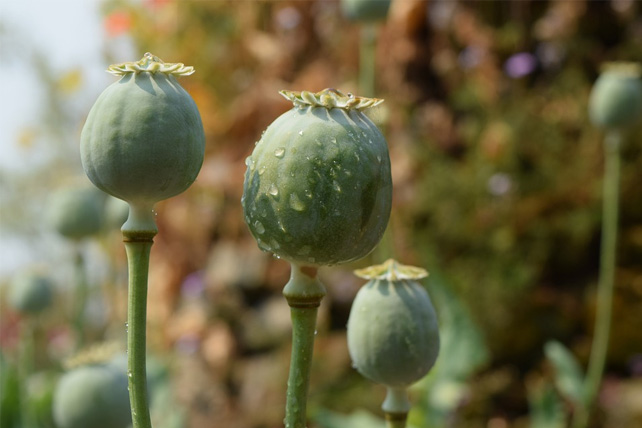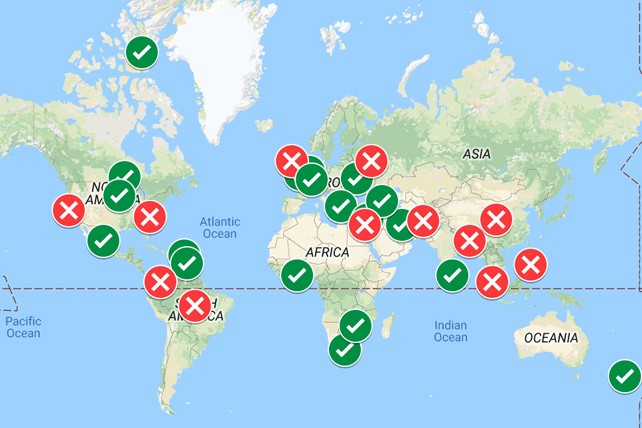In the face of insufficient government action on the unregulated production and use of heroin in Myanmar, a vigilante group is implementing a violent, controversial, and seemingly unsuccessful attempt to change things.
Community-based movements in Myanmar have an important role to play in reducing problematic heroin use. However, the harsh methods being used by Pat Jasan, a Christian vigilante group in the northern state of Kachin, are dividing opinion and eliciting international condemnation.
Pat Jasan was formed in 2014 by a coalition of Baptist, Catholic, and Protestant churches in Kachin with the self-proclaimed goal of “completely eradicat[ing] drugs from the Kachin people”. The group has recruited thousands of volunteers to destroy fields of opium poppy, from which heroin is produced, and apprehend people alleged to have used or sold drugs.
Myanmar is the world’s second largest producer of opium, after Afghanistan. Whilst much of the country’s illicit opium and heroin is smuggled abroad, the low cost and accessibility of the heroin which remains in the country has led to significant rates of heroin use, for which Kachin authorities have been ineffective at responding to.
Specific rates of drug use are difficult to ascertain. In 2013, one researcher – Reverend Maji La Wawm – estimated that around one person in every Kachin household regularly used heroin. The same year, the Kachin Baptist Convention (KBC) estimated that a staggering 80 per cent of Kachin youth are dependent on drugs, although the link between Pat Jasan and the KBC suggests this figure may be exaggerated. In a recent BBC broadcast, heroin use appeared to be de facto decriminalised in parts of Kachin's Hpakant Township as police officials turned a blind eye.
Pat Jasan operates a number of Christian-based rehabilitation centres throughout Kachin where people who use drugs are often beaten, restrained, and forcibly detained for weeks in small cages where they have no access to any medical treatment or withdrawal relief. Their “clients” are encouraged to use prayers and songs to replace drug use with religion.
U Aung Myo Min, a human rights activist and the leader of Equality Myanmar, has said that even though he supports Pat Jasan’s goal of ending drug use, he cannot support all the means they use to achieve it: “we cannot tolerate it, despite their noble goal”.
Alongside Pat Jasan’s approach to drug use, their opposition to the drug trade has also elicited anger. The group’s poppy-clearing missions have particularly prompted backlash from opium farmers wishing to protect their crops. In February 2016, a 19 year old member of Pat Jasan was shot dead by a farmer and, in a separate incident, 14 members were injured in violent confrontations in the Wai Maw Township.
Forced eradication of crops is generally ineffective at limiting drug production, as the method primarily targets impoverished and voiceless farmers at the lowest levels of the drug trade; the powerful individuals higher up often continue to flourish. Similar attempts to eradicate opium in Afghanistan, and to eradicate the coca crop – the raw ingredient used to make cocaine – in Latin America, have been unsuccessful.
Despite this, Reverend Samson Hkalam, the leader of the Kachin Baptist Convention and founding member of Pat Jasan, maintains that his group’s approach is the only approach to resolving the epidemic because the government has failed to take any meaningful action.
In the aforementioned BBC broadcast, Hkalam openly admits to breaking the law, and says that "if we don't beat … and hit [people who use drugs]", then they won't reveal their heroin sources.
Distrust of the national government runs deep amongst the Kachin people. Internal conflict has plagued Myanmar since the country first gained its independence from Britain in 1948, and the Kachin Independence Army has been fighting against government rule since a 17 year ceasefire was broken in 2011.
Whilst some believe that the government's inaction stems from endemic corruption and apathy towards the Kachin people, there have also been accusations that the government is using heroin as a weapon against the Kachin people; purposefully proliferating problematic drug use so to weakening their ability to resist. Reverend Maji La Wawm has dubbed this “an ethnic cleansing policy”. Patrick Winn, the senior Southeast Asia correspondent for the Global Post, points to potential similarities with Britain’s use of opium to subdue China in the 19th Century.
Whatever the government’s motive, it is clear that the Pat Jasan movement has emerged out of a desperate need for action. Nonetheless, there is clear evidence that harm reduction programmes, such as the Substance Abuse Research Association (SARA) – a local Kachin NGO offering counselling, education, medical treatment, and needle exchange project – offer better prospects of success than the harsh methods deployed by Pat Jasan.
If problematic drug use is to be properly combatted, the social, economic, and environmental conditions which facilitate it must be changed. However, as Tom Kramer, a political scientist and researcher at the Transnational Institute, makes clear: “it is very hard to solve these problems without solving the conflict in Myanmar first”. For this reason, without peace and stability, a community-based organisation such as Pat Jasan, or indeed SARA, no matter its methods, will always be limited in what it can achieve.


